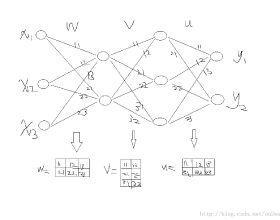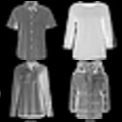In a physical neural system, backpropagation is faced with a number of obstacles including: the need for labeled data, the violation of the locality learning principle, the need for symmetric connections, and the lack of modularity. Tourbillon is a new architecture that addresses all these limitations. At its core, it consists of a stack of circular autoencoders followed by an output layer. The circular autoencoders are trained in self-supervised mode by recirculation algorithms and the top layer in supervised mode by stochastic gradient descent, with the option of propagating error information through the entire stack using non-symmetric connections. While the Tourbillon architecture is meant primarily to address physical constraints, and not to improve current engineering applications of deep learning, we demonstrate its viability on standard benchmark datasets including MNIST, Fashion MNIST, and CIFAR10. We show that Tourbillon can achieve comparable performance to models trained with backpropagation and outperform models that are trained with other physically plausible algorithms, such as feedback alignment.
翻译:在物理神经系统中,反向调整面临许多障碍,包括:需要贴标签数据,违反地点学习原则,需要对称连接,缺乏模块性。Tourbilon是一个解决所有这些限制的新架构。在核心方面,它由一系列圆形自动解剖器组成,然后有一个输出层。循环自动解剖器通过回溯算法进行自我监督模式的培训,以随机梯度下移的监管模式进行顶层,选择利用非对称连接在整个堆叠中传播错误信息。尽管Tourbilon结构主要是为了解决物理限制,而不是改进当前深层学习的工程应用,但我们展示了其在标准基准数据集上的可行性,包括MNIST、Fashason MNIST和CIFAR10。我们显示,Tourbilon能够取得与经过反向回向回向回向转换和超向模型培训的模型的类似性能,这些模型经过其他实际上貌上貌的演算,例如反馈校准。





